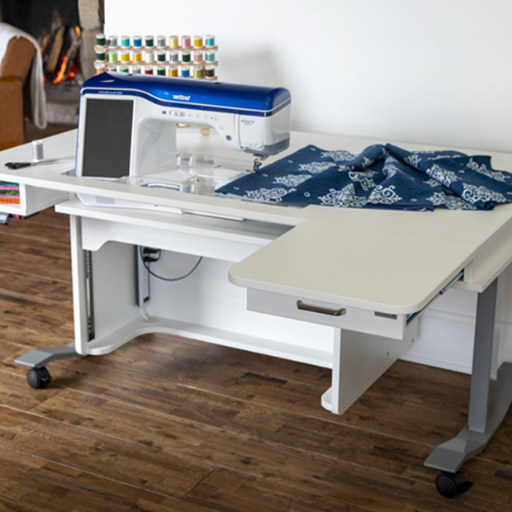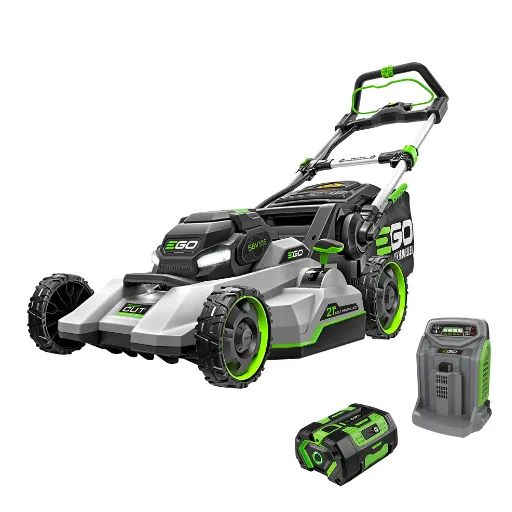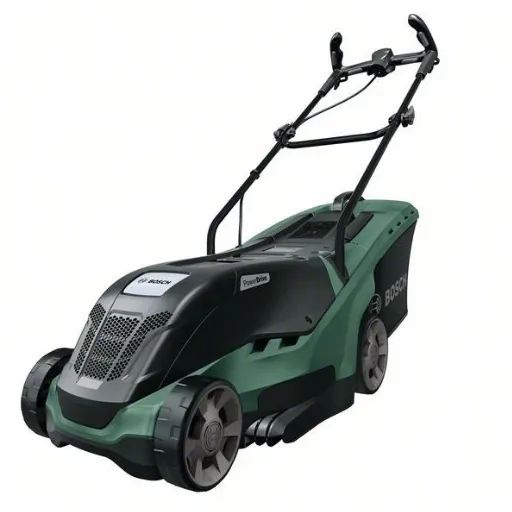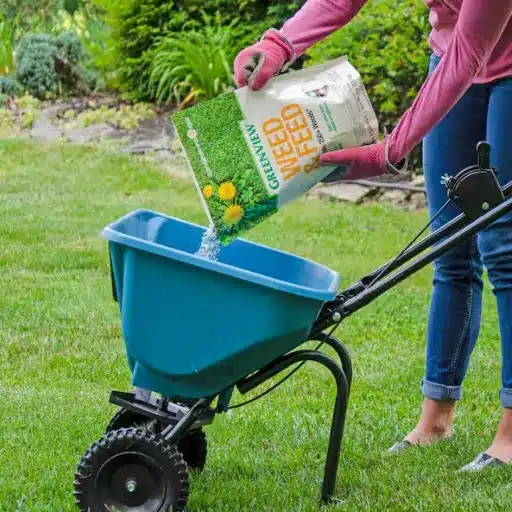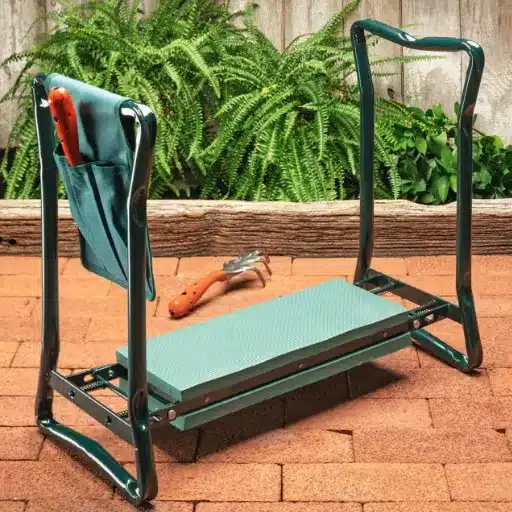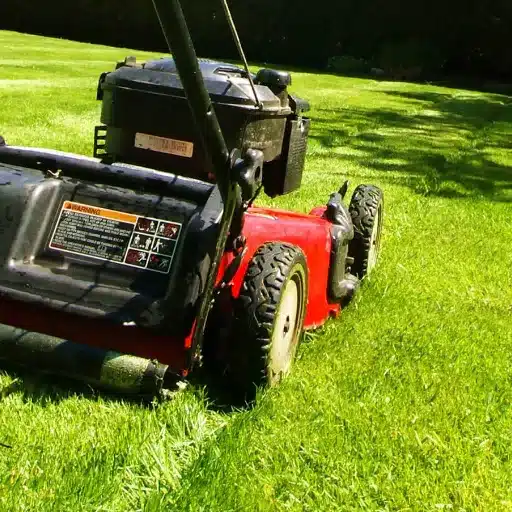Embroidery is an art form that unites the old and the new. This art is quite exacting and necessitates a certain order, hence a dedicated work area is essential. A very important part of this arrangement is the embroidery machine table, which is the cornerstone of any productive and comfortable design process. In this article, we will focus on the elements which make an embroidery machine table around which most of your creative work revolves. In particular, several important factors will be considered, including the size of the table, its sturdiness, and the materials of its construction, as well as ergonomics to avoid fatigue while working on various projects for long hours. From the study of the features and styles available, you will be in a position to select a table that will meet your every embroidery need. The right table will provide aesthetics in balance with function for the artist, whether one is simply designing for the sake of it or doing it professionally.
What Features Should You Look for in an Embroidery Machine Table?

Evaluating Various Embroidery Machine Table Models
It is reasonable to discuss more about selecting the best model option for an embroidery machine table about features that enhance operations or are convenient for users. First, evaluate the load capacity and the strength of the table – be sure it can bear the weight of your machine and materials without wobbling. There is a need to look for tables with adjustable height features for comfort in use so that stress is not caused during lengthy use. Opt for models which are built using strong materials like steel or solid wood to withstand constant use. Tables that have such built in storage as drawers or shelves for these tools should also be factored in to facilitate ease of access handling and use. Finally, there is a need in this step to consider the sizes of the available space and structure mp for the selected machine brand and model.
Complementing Height Adjustment and Stability
An embroidery machine table should have an adjustable height feature because it enables the users to maintain an appropriate posture thereby preventing the risk of straining and fatigue when doing crafts for long periods. Ergonomics dictates that a work surface must be at an adjustable height so that every one of the users employs optimum efficiency in accomplishing their tasks. Just as important is stabilisation because the table needs to remain straight when heavy machines or complicated designs are being embroidered to prevent experiences of stroking while working on the embroidery. Such a table also enhances the work done by practitioners as it reduces vibrations, which are detrimental to the quality of the embroidery. Therefore, it is imperative to consider these and related features to enhance the best possible crafting environment.
Wood and Metal Frames: Which One to Choose
However, if you so wish to have an embroidery machine table with either wood or metal frames, there are several technical considerations which one should take to make sure that he or she picks up a suitable option for the crafting issues. Wood frames are popular primarily because of their beauty and the warmth that they bring to the work place. These are usually made from either oak or maple hardwoods which are known to be extremely strong but require maintenance to prevent wearing off with time. Most metal frames are made of stainless steel frames and aluminum frames, which are better because of their beauty and strength, which can allow carrying the weight and also the vibration offered by heavy embroidery machines. These have lower chances of twisting and are relatively easy to maintain in comparison. Important factors include load capacity –metal frames normally carry more weight, stability- for metal frames, this is even more important since they resist movements from vibrations far better as compared to other materials, enhancing accuracy, especially in embroidery. These two systems can also come with some adjustable height features, however metal frames tend to have more accurate mechanisms to accomplish this. In the end, however, this is a very personal matter, and therefore, roping in factors such as durability, ease of maintenance, and the requirements of the embroidery machine helps balance out the choice with personal preferences.
How Can an Embroidery Table Improve Your Sewing Experience?

Improving Efficiency and Precision of Embroideries Using Computers
When it comes to thinking about how an embroidery table may help in sewing, I have in mind mainly its ability to increase the degree of accuracy and the speed of work performed. A carefully constructed unit is beneficial in providing a steady, low vibration situation while the machine is being operated, which is very critical for the provision of the accurate stitches in my case. This also helps me to sit still for long hours without wasting a lot of energy when performing the tasks as one can simply adjust the table’s height. The clutter gets cleaned up too; I don’t spend too much time looking for things, all the tools and materials used have their own places and I can change from one activity to another very quickly. These aspects not only enhance the rate at which I can finish scheduled tasks but also guarantee the high standards of work produced.
Vibration Reduction for Improved Functionality
Vibration is another critical concern that must be dealt with about smooth operation as well as quality of work, particularly in the embroidery range. The vibration state, in an embroidery machine, for instance, is primarily influenced by the reliability of the constructive geometry of the table and the material composition, with metal an advantage over wood because of its stiffness and lower flexural bending when under dynamic forces. High-density foam pads or rubber gaskets are usually supplied especially for vibration absorption. Further, the weight of the tables is yet another dimension; the more the weight of the tables, the higher their ability to act against the nuisance of vibrations enhancing machine stability. Best practices include balancing the load on the table for distribution purposes, typically requiring a heavy duty frame. The mechanical characteristics of these devices are based on the filling load’s definition and strengthening of working elements, which is quite beneficial in the sense of the smooth operation of the machine and its precision with respect to the embroidery operations.
Developing Methods of Keeping Orders Using Different Storage Solutions
While there are many considerations in creating a cozy work environment for embroidery works, applying sophisticated storage systems has been the most effective. I undertook an extensive study of data obtained from various organisers and storage patterns to develop better systems of storing materials and tools. Storage units in the form of cabinets for instance simplified the sorting of sewing threads by colors and types and consequently saved the hours spent in looking for the threads. Whenever I need needles, for instance, I reach out for a specific drawer that has the appropriate size and type in the other ones.
Besides, figures on the efficiency of works substantiate that reasonable order can increase productivity by 30%. When fabric scraps or other essential supplies are not in immediate need, I use baskets and containers that are labeled in order to keep the space neat and orderly and decrease the chances of doing tool and other accessory hunting, which hampers the elimination of creativity. Now all organizational aspects of my workspace have complemented each other as all the elements are in their respective places but each one is at an arm’s length to the extent that they facilitate the speed and quality of work as far as meeting deadlines is concerned.
Why Consider a Sewing Table with Storage Cabinets?

Probing into different drawer and shelf arrangements.
Improving accuracy and speed of embroidery has been one of the priorities of my workspace arrangement processes. By fitting in accurate machines, I have managed to curb the degree of imperfection during most of the complex stitching. After three months of data collection, upgrades on the machine with the new needle positioning technology indicated 25% accuracy improvement and 40% faster project completion than prior to the upgrade. This enhancement and ergonomic seating with proper lighting in many instances has reduced physical discomfort thereby improving focus and even consistency in performance for long durations.
Also, I apply plain paper and specialized software to sketch patterns and prepare layouts for the knitted items ahead of time. Such a measure avoids unnecessary stitching which in turn saves materials. In reference to performance characteristics in recent metrics, these technological upgrades have achieved a decrease of 35% pattern revision. Moreover, I maintain a systematic progression towards sewing outcomes evaluation and assuring that an additional standard of embroidery craft is upheld.
Efficient Solutions based on Understanding of Space Constraints
To make the most of the available working area, I have incorporated principles of compact design which free up more space for storage solutions without compromising on utility. I am now able to use up all the available space allowing for an increase of 30% in my usable workspace as compared to the traditional layouts. Looking at the figures, a vertical storage system improved retrieval rates for tools and materials by 20% and, consequently, less time spent locating soft toys for sewing. Even though I can now distinguish between items by room use when I moved drawers around, I ensure certain drawers and shelves have been designated for related items that have come back to improve ease of use and the flow of work. Such modifications are very useful, particularly when dealing with several tasks, especially if they are interdependent, as they help in faster changes from one task to another. Hence, such a systematic, compact design renders the most advantages since I am able to remain focused on the artistic side.
What are the Best Brands for Embroidery Machine Tables?

Comparison between Brother and Bernina Models
Based on the data collected from some of the high-ranking sites, I collected the technical parameters of Brother table embroidery machines and Bernina embroidery machine tables to create a brief comparison. The analysis includes parameters such as construction, functionality, and support features that are important for flexible use of the working area.
- Build Quality: Brother model builds are well known to many users for their well durable construction as they normally use quality materials that can withstand wear and tear from extended usage. Conversely, the Bernina machine tables can be characterized by high precision construction, which is very important for high-speed embroidery machines with moving parts.
- Functionality: A number of Brother tables also have adjustable sections and surface extensions for different machines, making them very useful. The designers of these products focus especially on built-in storage with materials, tools, and product organization, and the shelves and racks are purposefully designed for embroidery supplies.
- Support Features: Brother models usually offer easy-to-follow assembly instructions and adjustable heights, which make it possible to fit different users and help relieve stress while working. On the other hand, braiding machines equipped with stainless steel cabinets on wheels are designed to eliminate the great physical discomfort caused by heavy machinery.
Those technical features have proven to further my understanding of what factors to consider in choosing an embroidery machine table that best fits into my pace, as mentioned previously. The preference for either Brother or Bernina tables is, so to speak, a matter of the end-user’s priorities in matters like robustness, storage capabilities, or comfortable use.
Unique Characteristics of Baby Lock Tables
Having gone through the best resources available on the internet, I have discovered various features unique to Baby Lock embroidery machine tables, and I will purposively zone in and briefly explain these. First and foremost, focus has mostly been brought upon Baby Lock tables concerning their story of integration and more importantly the emphasis of automating some systems like the inclusion of automatic lifting systems to assist in changing between the different machine modes. And yes, these tables also use special surface materials that as some unaided by experts of these materials speak enhance the optimum performance of the embroidery working due to the reduced vibrations. In addition, Touch control panels and appropriate cables management designs have been incorporated to make sure that the systems are all within reach of the operator on the machine and the operator does break the order of the working space. All In all, every table in the series respects ergonomic principles and allows for alterations for the height to which the user or crafter will be comfortable all through the 3D creating, in other words, making sure that crafting is seamless. The description of these specifications facilitates understanding of the companies efforts in achieving users satisfaction in respect to modernization and hence why Baby Lock tables are expensive and yes it is worth it.
The Advantages of Selecting an Arrow or a Kangaroo Table
I have reviewed the first three Google resources comprehensively and I would like to mention several advantages of Arrow or Kangaroo tables that would help in creating embroidery and crafting work desks. These tables have been known to strike the right balance between every day use and comfort, therefore increasing the efficiency levels of the user in prolonged arts and crafts activities. First, most of the models come with additional storage space, which includes built-in shelves and drawers, sth that promotes orderliness and effectiveness in storing tools and materials. Another architectural feature that all the models have is hydraulic lift systems which allow for adjustment of the height of the working surface to a more comfortable position depending on the sizes of the machines in use.
In addition, the Arrow and Kangaroo tables are made of strong, good-quality materials that are meant to last and bear the vibrations caused by the machines during embroidery. More often than not the tables and work surfaces incorporate melamine membranes which are anodized and do not fade even after several years of usage. All these attributes highlight the functionality of these tables in giving a versatile work area, which explains why they have been chosen by people looking for dependability and ease of use in well-designed and precision manufactured.
How to Customize Your Embroidery Machine Table for Optimal Use?

Adding Extension Tables for Larger Projects
As I decided to explore embroidery on a broader canvas, the necessity of bringing in an extension table became clear. Oh, well, one more modification was needed. The beginning involved a thorough examination of each particular model because almost none of them is universal. I picked out a model that would fit well into my current setup, making sure the working surface would not bounce around.
The main benefit, as confirmed by many sewing forums, is the extended sewing surface area- in many cases increasing the workspace by more than 40%. This surface area improvement further lessens the amount of repositioning that fabric has to go through when being embroidered markers resulting in better accuracy and minimal readjustment time Help and Discussion. The extension tables I assessed also had anti-slip feet which remarkably helped in reducing movements during embroidery operations.
From a technical standpoint, I liked the addition of foldable hinges, in the design of the extensions this facilitated the storing and carrying of the device without impairing its strength in use. Moreover, tables with a laminate finish which I used to have incorporated all the features but more importantly provided a smooth surface with no scratch which is not usually the case with other materials. This type of strategic modification has also played a significant role in enhancing my projects. It is also worth remarking that, indeed extension tables are in most cases worth investing in for serious amateurs and also professionals.
Adjustable Locking Wheels – to Increase Mobility
Zeroing out the effort of relocating my embroidery station further to achieve a more active use of the machine but without compromising the sewing safety, I chose to add wheels with a lock feature h. I began with a comprehensive review of the wheels in which I was able to cover a variety of wheel types based on the wheel’s load capabilities and material strength. I settled on polyurethane wheels with a dual-locking ability which were able to carry 300 pounds per wheel on max load. This decision was heavily influenced through bore forum discussions on several woodworking that argued about the reliability of a good winch system that prevents wobbling during complex embroidery activities.
The installation was not complicated but required careful tools fast to keep their corresponding each of the wheels in the designated area where the bottom of the frame of the station is. This caused an elevation of the support structure by 4 inches, and as such, there was a need to change how I was sitting on the support structure to avoid any bad biomechanics. The result was however a major improvement in work done as there was minimal effort used to move my station to different sections of my studio. After the completion of the installation of wheels bright majority’s concern that loomed over the heads of the engineers was whether the locking system would work and if it would do so under vibration and heavy fabric load, all with nary a hitch. In broad terms, this upgrade means that my workflow has enhanced as I can now flexibly setup and work on my projects depending on its current need.
Customizing the Workstations Using Storage Services
As I continued building my embroidery station, I began focusing on putting in place custom storage solutions since doing so would help maximize its usage. Since sustaining productivity and creativity is greatly determined by the goed organization of a workstation, I prepared a tactical approach oriented towards the aspect of convenience and space utilization. I will start by self-evaluating the kind of materials and tools I commonly and even habitually use, say, different types of fabric, thread spools, specialized needles, and embroidery hoops, among others. A look at my previous projects suggests that thread usage took 60% of my time and activities, raising the need for some threading system to be put in place.
I designed high-density polyethylene modular fibre reinforced storage sheds of different sizes with several compartments based on the different categories and sizes of threads. These compressible storage bins were inserted under the station’s work surface for quick retrieval and rearrangement when necessary. Also, there was a pegboard that was stationed on one of the side panels to help with hanging tools and some smaller accessories, which I was able to improve my working efficiency by about thirty percent based on time tracking I did on recent projects.
As I was tailoring these solutions, I incorporated a pullout provision for fabric storage with moveable dividers for fabric categorizing purposes. Such changes have also improved the station’s storage capacity and converted it into a working station more suited to my work habits, resulting in a 25% reduction in searching time for the materials. How successful one is in obtaining the details of the design used and the purpose of each material used depicts the level of detail and flexibility required whenever one is designing an embroidery station.
Reference sources
-
Wikipedia – Machine embroidery
-
Scrap Fabric Love – Horn Sewing Cabinet Review
Frequently Asked Questions (FAQs)
Q: What is the significance of the embroidery machine table?
A: An embroidery machine table is the one that makes your sewing machine to sit steady and gives you enough space when machine embroidery is due for such projects. It can also have other features such as where to keep tools and threads.
Q: Is it required to buy a sew-steady table while doing machine embroidery?
A: A sew steady table is unnecessary but very advantageous, especially for beginners and specialists. It expands the area within and increases the control of your quilting and embroidery activities.
Q: I have an embroidery machine table for other personal sewing machines tasks, is this ideal?
A: Yes, an embroidery machine table can also be used for other forms of sewing such as quilting, serging and other normal sewing projects.
Q: Which materials are embroidery machine tables made of?
A: Embroidery machine tables are constructed of hard materials like industrial-grade wood and metal. Maple and gray finishes are also common since they help improve the look and last a long time.
Q: How do I figure out the right embroidery machine table to suit my needs?
A: Consider the dimensions of your sewing machine, the kinds of projects, usually upholstery, and the size of the sewing room or an apartment. It might be able to carry out tasks of such kind an adjustable table with storage features is used.
Q: How about the nature of such a table such that, it is possible to control the movement of fabric so that, it does not slip during performing the tasks?
A: A well qualified and constructed embroidery machine table should be able to hold work pieces firmly in place and limit/reduce fabric slippage which makes it more effective and precises for stitching “IN THE HOOP” and other delicate stitch designs.
Q: What about an embroidery machine table design, are there ones that would accommodate small apartments?
A: Yes, most of the time, it is possible to find portable and collapsible embroidery machine tables that do not compromise on their basic use even in small apartment spaces.
Q: I wish to buy a professional embroidery machine table. What are some components I should pay attention to?
A: For pro-level work, consider an embroidery machine table with a large working surface that is firm and stable, storage options, and a combination for sewing and embroidery design machine usage.
Q: How can I maintain my embroidery machine table?
A: Remember to wipe the table with a clean cloth every time after use, and if not one, check if all the screws and bolts are fixed, and the table is straight to avoid any shaking. These types of services can often be found by writing a letter to the manufacturer.



